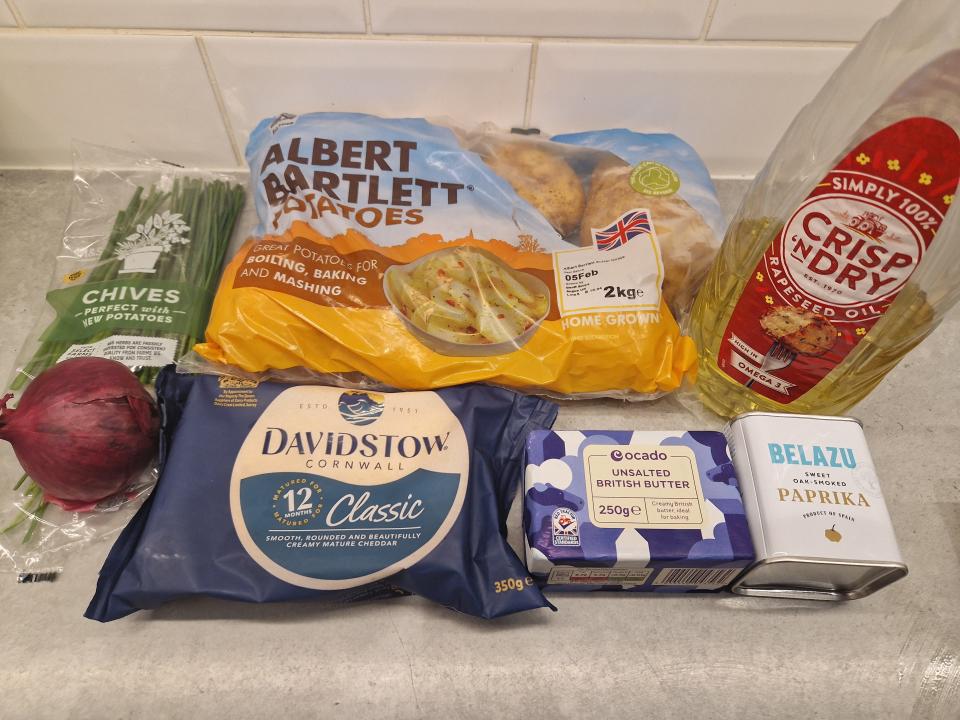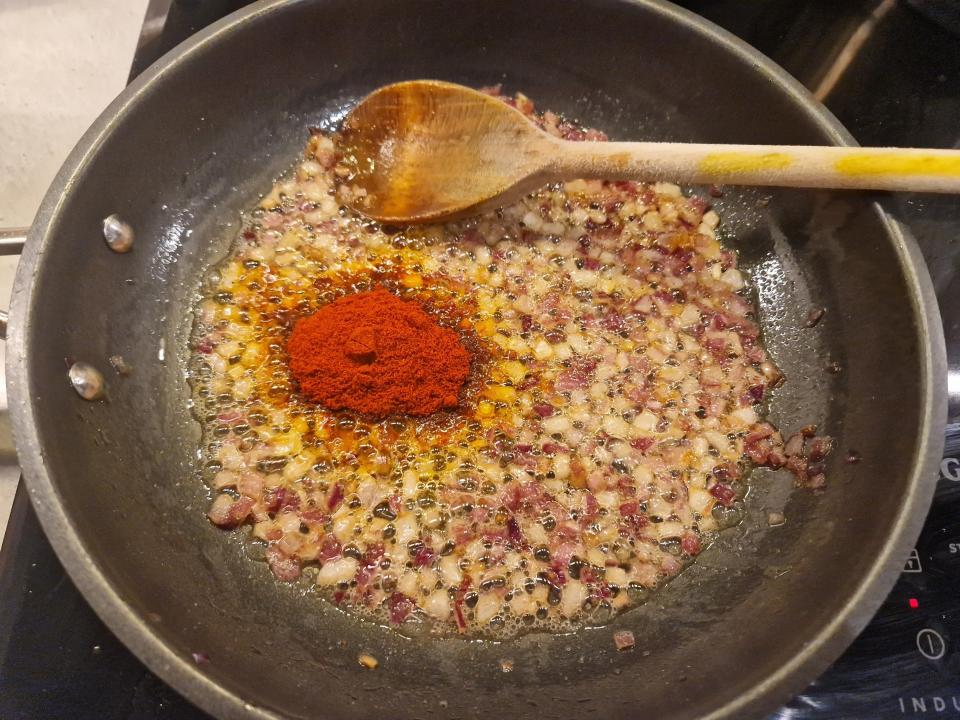I tried hash-brown recipes from Ina Garten, Bobby Flay, and Jeff Mauro, and the best was the easiest to make

I made hash browns with recipes from Ina Garten, Bobby Flay, and Jeff Mauro to see which was best.
Flay's version was delicious, but it was more like a potato cake than a hash brown.
Mauro's easy-to-follow recipe was the winner, and it turned out perfectly.
I always have a bag of potatoes on my shopping list because they're such a versatile ingredient.
Since hash browns are a staple side dish, I tested out recipes from Ina Garten, Bobby Flay, and Jeff Mauro to find out which chef's potatoes would be my new favorite.
Here's how the recipes stacked up.
Garten's ingredient list was short and simple.

Garten's recipe had just five ingredients (plus salt and black pepper), and I already had most of them in my cupboard.
It just called for plain flour, eggs, butter, an onion, and potatoes.
The twist to Garten’s recipe was that it required a waffle maker.

My electric waffle maker takes a while to heat up, so the first thing I did was plug it in and turn it on.
While it was heating, I got started preparing the ingredients.
I shredded the peeled potatoes using a box grater.

Garten suggested using a food processor with a grater disk to shred the potatoes, but I prefer to use a box grater.
It didn't really take that much more time or effort than a processor, and there was far less washing up after.
Squeezing the grated potatoes with a tea towel helped me remove any excess moisture.

I placed the grated potatoes in the middle of a clean tea towel, gathered the edges, and twisted the pile into a ball over the sink to squeeze out as much liquid as I could.
I knew the drier I could get the potatoes, the better the result would be — wet mixtures don't tend to crisp up as well.
I then repeated the same tea-towel process with the peeled, grated onion.
I combined all the ingredients in a bowl.

I placed the dried potatoes and onions in a bowl and added the flour, melted butter, egg, salt, and pepper, stirring well to combine.
Then it was time to pack the potato mix into the waffle maker.

I generously brushed the waffle maker with melted butter and packed the potato mix in, spreading it out as evenly as possible.
After closing the lid, I allowed the hash browns to cook for about 10 minutes.
The hash browns were tricky to get out of the waffle maker.

Although I buttered the waffle maker well, the hash browns still stuck to the cooking surface.
It was tricky to remove them in one piece.
I was disappointed that my hash browns didn’t look as good as Garten’s.

After 10 minutes in the waffle iron, the hash browns only had a little bit of color and they hadn't really crisped up at all.
I didn't like the soft texture, and with the addition of egg and flour, I thought they tasted different from a traditional hash brown.
After making a second batch and having the same problems, I decided the waffle iron wasn't for me.
I cooked the rest of the mix in a frying pan, and it turned out great.

Since I didn't want to waste the last third of the mix, I cooked it in a nonstick pan over medium heat with a teaspoon of melted butter.
After five minutes, I removed the pan from the heat, placed a plate over it, and flipped the potatoes to cook the other side.
I replaced the pan on the heat, melted another teaspoon of butter, and slid the circular hash brown back into the pan for five more minutes.
It turned out nicely browned, crisp, and tasty — much better than the waffle-maker version.
Next I tried Mauro’s recipe, which had some different ingredients.

There were no eggs or onions in Mauro's "atomic" hash-brown recipe.
But in addition to potatoes, butter, and olive oil, the chef called for paprika, garlic powder, and cayenne powder.
The first part of the method was almost identical to Garten’s recipe.

I peeled, grated, and squeezed the potatoes exactly the same way I did for Garten's recipe. Then I combined them in a bowl with the spices, salt, and pepper.
I fried the potato mix in oil and butter.

I heated a large nonstick pan over medium heat, added half the oil and butter the recipe called for, and packed in all the potato mix.
After about five minutes on one side, I turned it over using the plate method and cooked the other side for five minutes in the remaining oil and butter.
The hash browns looked exactly like the picture in the recipe.

The hash browns had a great color from the spices, and they crisped up nicely in the pan.
The flavor was really good and paired well with some pan-fried chicken breast.
Finally, I tied Flay’s simple cheese hash browns.

Flay's recipe differed from the others in that it included cheese and chives. But like Mauro's, it also called for paprika.
There was no potato grating required for this recipe.

Unlike the other recipes, Flay said to boil the potatoes until nearly tender before smashing them to make the base of the hash browns.
I couldn't get hold of the specified small Yukon gold potatoes, so I substituted them with larger butter-gold potatoes that I quartered.
Since it didn't indicate whether or not to peel the potatoes, I left the skin on.
The recipe said to smash the boiled potatoes with the back of a wooden spoon, but I decided to use the palm of my hand so I'd have more control over how crushed they ended up.
I started by frying the chopped onions in butter and oil.

While the potatoes were cooking, I diced an onion and fried it in a large nonstick pan.
I deviated from the recipe slightly by adding the paprika, salt, and pepper to the onions. The recipe said to add these at a later stage, but that didn't make sense to me.
I wanted the flavors to meld and the spice to cook out.
When the onions were caramelized, I added the potatoes to the pan.

I placed the potatoes on top of the onion mixture and cooked everything for about 10 minutes.
Then I used the plate method to invert the hash browns and cook the other side for five more minutes.
At this point, the onions were a little burnt.
Once the melted cheese and chives were added, the hash browns tasted great.

To finish the recipe, I covered the cooked potatoes with grated cheese and put them under the broiler. Although Flay said to cover the pan with a lid to melt the cheese, I prefer it to be brown and bubbly.
When the pan was out of the oven, I scattered over some chopped chives.
The results looked and tasted great.
I liked the addition of the cheese, but I think it made the finished product more akin to a potato cake than a hash brown.
All three recipes had their pros, but Mauro’s was the clear winner for me.

By changing the cooking method, I achieved successful results with Garten's recipe. But I don't think I'd make it again — I didn't love the soft, almost pancake-like texture.
If I made Flay's recipe again, I'd mix the cooked onion and spices into the crushed potatoes (which I'd peel) before frying to avoid any burning.
Mauro's recipe was easy to follow, worked perfectly, and produced a recognizable hash brown.
It looked great and had a delicious spicy flavor, so it's my new go-to.
Click to check out the other celebrity-chef recipes we've put head-to-head so far.
Read the original article on Business Insider


